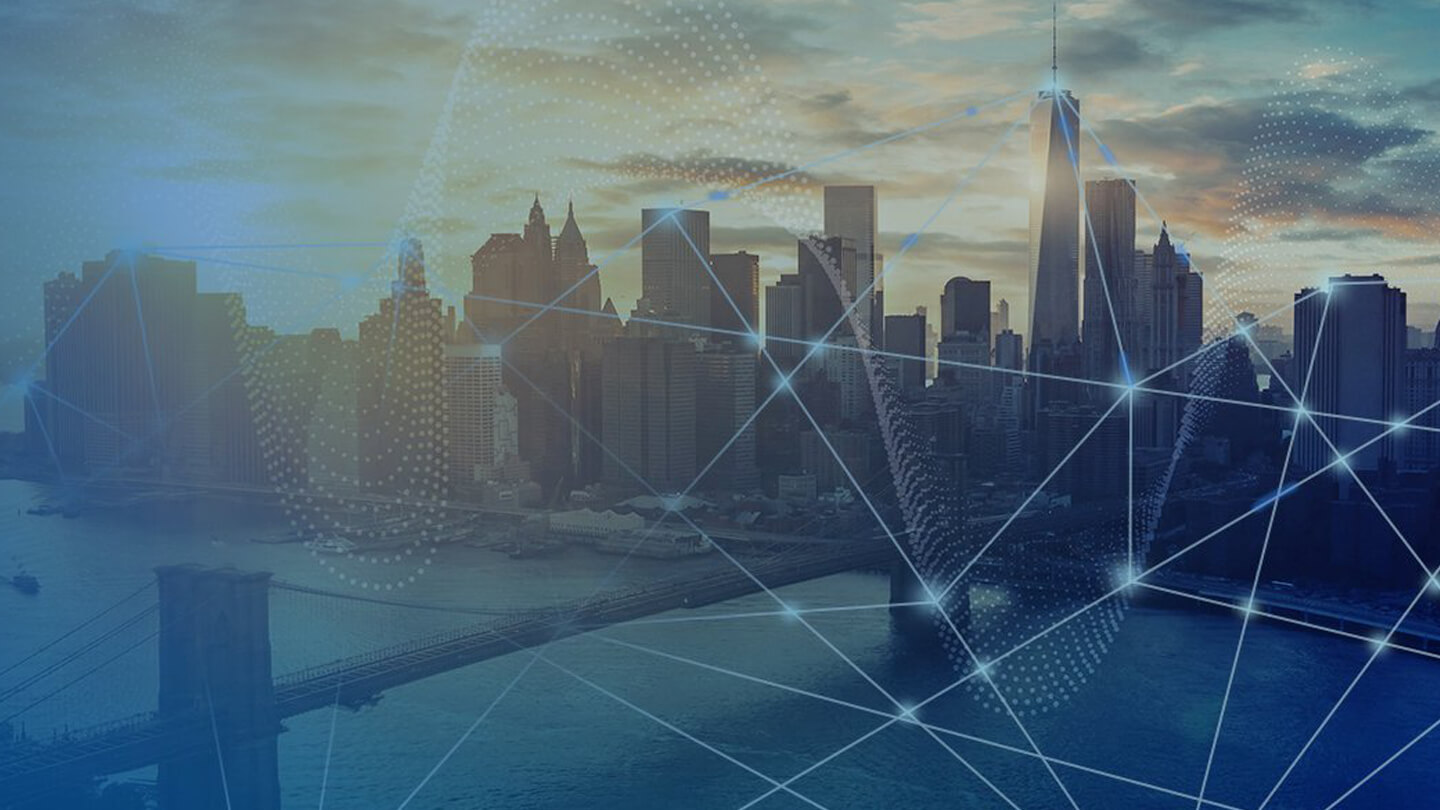Edge computing presents organizations with a significant leap in business opportunity. Much has been written about the benefits of the Internet of Things (IoT), but it is now clear that these benefits can only be truly realized with Edge computing. Limiting your organization to only adopting central cloud computing simply won’t support your future IoT needs. Today, every organization needs to be a digital organization, powered by data, running in a multi-cloud world. Recognizing that multi-cloud actually begins at the point of data creation – the Edge – the value in the future is in combining Edge computing with IoT.
Today, 90% of all data is created and processed inside traditional centralized data centers or clouds. That is beginning to change. According to Gartner1, by 2025, 75% of data is going to be processed at the Edge.
The Edge exists wherever the digital world and physical world intersect, and data is securely collected, generated and processed to create new value. Edge computing expands IoT by enhancing our ability to analyze IoT data and act on it in real time.
Edge technology is the answer to many of today’s pressing business issues: increasing data volumes, costs of data transport, latency and insights that arrive too late to be actionable.
Forrester, in its Edge computing report2, highlights the need to move data analysis to the Edge in order to address barriers to business growth. Forrester found that 49% of firms surveyed identified the need to be able to monitor structured and unstructured data in real time, and a massive 76% stated that identifying “the ideal location” for data analysis was challenging forward progress.
And, McKinsey, in its report3, identified a total of 107 different use cases for Edge and IoT. The true proof as to how Edge technology can be used to great effect with IoT, in four key sectors – on a daily basis all around the world – is demonstrated below.

Shutterstock
Turning urban areas into smart cities
According to estimates from the United Nations4, today 55% of the world’s population lives in urban areas, and that number is expected to grow to 68% by 2050.
Edge IoT is helping to make cities healthier, safer and more prosperous, liveable urban environments. Forrester reports2 that 83% of smart cities and government agencies are actively using or exploring Edge IoT, with particular benefits highlighted for transport and utilities.
With so many activities taking place in even the smallest of cities, there are many applications for Edge and IoT. Here are four key use cases:
Boosting public safety and monitoring
Computer vision – that depends on cameras as the data collection points at the Edge – can help cities monitor the safety of its citizens and, when the need arises, to act immediately. It can help police pinpoint information, both preventing crime and helping to solve cases.
Improving Traffic & public transport monitoring
Data from embedded sensors, video cameras and other sources can help city operators better understand traffic patterns and make adjustments in real time.
Saving resources through smart metering and billing
Smart utility meters can provide consumers and businesses with real-time information on energy consumption, helping to control the use of precious resources.
Making parking and waste management smarter
Smart parking can lead drivers right to open spots and cameras can monitor vehicles for parking violations. Sensors on bins can indicate when they need to be emptied, saving unnecessary trips.
Harnessing the power of data in retail
The retail sector is generating unprecedented amounts of data, from both online and bricks and mortar locations. In 2019, global e-commerce retail sales alone amounted to $3.53 trillion and e-retail revenues are projected to grow to $6.54 trillion by 2022 (Statista5). Retailers that have the systems, strategies and analytics tools in process can capitalize on the growing amounts of data produced across all areas of retail.
Edge analytics will be critical to the success of harnessing the power of data. The retail sector has three compelling reasons to move analytics to the Edge:
- Volume: Edge data could account for 75% of enterprise data within the next two years.
- Cost: In many cases, it will cost less to process and analyze data at the Edge than moving data to the Cloud.
- Speed: Many critical use cases for IoT in retail simply cannot accept the inherent latency of sending data over a network for processing.
Some of the key Edge and IoT use cases for in retail are:
Combining data from multiple sources to improve customer experience
Edge computing can combine data from a myriad of sources – online research and point of sale, loyalty and CRM, in-store sensor and devices, self-checkout, current inventory, historical data – and more – to help improve customer experience.
Analyzing shopper behaviors to drive personalized shopping
Real-time streaming data from enabled sensors, computer vision, AI and augmented reality can be analyzed more effectively using Edge technology to help create new and immediate personalized shopping experiences.
Advanced loss prevention
Using AI and computer vision, Edge and IoT systems can automatically detect criminal behavior and issue alerts to security personnel on the retail floor.
Predictive inventory and supply chain control
Drone-sweeps of inventory combined with computer vision-based location identification can help predict demand for products and ensure the right products are in the right place at the right time.

Shutterstock
Healthcare: improving wellness and saving more lives
The healthcare industry faces many key challenges: 1 in 6 people will be over 65 by 20506, 75% of older developed world adults present with multiple chronic conditions7, 44% of US physicians report burnout8 and we saw a massive 878% growth in healthcare and life sciences data between 2016 and 20189 and that continues to grow today.
In response to this, the industry has been successfully deploying Edge IoT technologies for several years, and we are now seeing an important shift to IoT, Edge computing and artificial intelligence to better understand and predict care outcomes.
There are many compelling and new advanced use cases for using Edge technology with IoT in healthcare, these are some key examples:
Improving patient safety
Computer vision can monitor patient safety and medical compliance, for example devices that ensure discharge instructions are adhered to, connected pill bottles that confirm correct dosage and telesitters to improve patient safety and reduce fall-risk in post-acute care step-down patients.
Expanding chronic disease management and preventative medicine
Sensors and devices can enable continuous patient monitoring, for example smart mirrors that detect physical changes. Smart wearables can track wellness indicators, such as motion and heart rate, as well as seizure activity, blood sugar levels and the data that builds predictive algorithms in pacemakers.
Advancing precision medicine research
Edge analysis of sensor-generated data can help overcome the prohibitive costs of rare disease treatment, for example the use of wearables in clinical trials can expedite study completion and improve compliance.
Enhancing pharmaceutical drug supply chain safety
Edge and IoT devices and sensors can reduce the risks inherent in the healthcare supply chain, for example RFID sensors that track medication from point of manufacturing to consumption.
Giving manufacturing a competitive edge
To drive business growth, manufacturers need to power their operations with real-time insights from data that is generated across the production process. Computing at the Edge is the only way to facilitate this. In fact, Microsoft recently reported10 that 87% of manufacturers are now adopting Edge and IoT solutions.
The use cases for Edge and IoT solutions in manufacturing have been highlighted in several studies. These are the top four:
Automating industry
Intelligent systems can automatically identity and rectify issues before they become business stoppage problems, for example, if an Edge computing system notices that a feed tank is low, it can slow the machine down and notify the plant operator.
Better quality and compliance
Edge computing can maintain the highest levels of product quality, eg automated visual inspection of products, fault detection and ejection from production line.
Improving planning and scheduling
Better production planning and maintenance through Edge computing, enables sensors that monitor temperature and dust levels to deliver real-time insights about machine components.
Smarter plant safety and security
Edge IoT enabled devices and computer vision can help manufacturers protect company property and vehicles, minimize onsite injuries, and reduce loss or damage to facilities.
Dell Technologies is a global leader in Edge IoT technology. It is working with business and organizations across retail, healthcare, manufacturing, transport, digital cities and utilities to leverage the potential of Edge IoT by focusing the power of technology close to the data source. To learn more go to: Edge IoT computing solutions from Dell Technologies and to contact a Dell Technologies Expert to discuss an Edge solution, or for any other enquiries, go to: Dell Technologies Edge & IoT Solutions.
Businesses looking to embrace the power of Edge and IoT technology need to identify the right partner to unlock the full potential of data and meet their current and future business transformation goals.
Processing data at the Edge creates true business opportunity. Analytics, streaming data, video, cloud services and next-generation applications such as virtual and augmented reality are driving the need to bring computing power and storage closer to the point of creation, closer to the Edge. For nearly all industries, Edge computing is promising to be the next big shift in architecture of distributed computing networks, representing a massive wave of opportunities.
1 Gartner, ‘What Edge Computing Means for Infrastructure and Operations Leaders’ (2018)
2 Forrester, ‘IoT Deployment Is Driving Analytics to The Edge’ (2019)
3 McKinsey, ‘New demand, new markets: What edge computing means for hardware companies’ (2018)
4 United Nations, ‘Revision of World Urbanization Prospects’ (2018)
5 Statista, Retail e-commerce sales worldwide from 2014 to 2023 (2020)
6 United Nations, ‘World Population Ageing’ (2019)
7 Marengoni A, Angleman S, Melis R, et al ‘Aging with multimorbidity: a systematic review of the literature. Ageing Res Rev2011;10:430–9.doi:10.1016/j.arr.2011.03.003
8 Medscape, National Physicians Burnout & Depression Report cited (2018)
9 Dell EMC Global Data Protection Index Survey (2019)
10 Microsoft, ‘IoT Signals: Summary of Research Learnings’ (2019)









